Click to start video
Click to start video
To date, automation of sample transfers in laboratories has been organized around two main strategies: conveyor belts and mobile units. The former is suited for transfers between well defined stations where the configuration won’t be modified . The latter are more suited for open, undisturbed environments such as warehouses where the footprint of such units is not impacting and the interaction with humans is highly controlled. In order to fully integrate sample transfer at the laboratory level, we developed a strategy using small robots that behave similarly to a 2D-drone swarm. It results in a fleet of affordable, easy to configure, open sourced robots that can transfer samples using a track suspended to the ceiling.
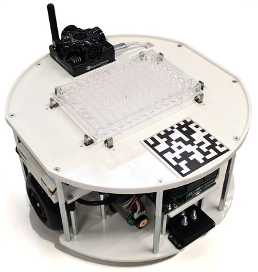 |
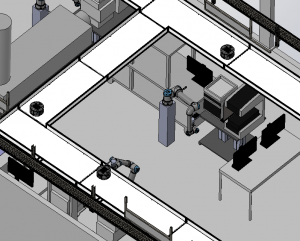 |
In collaboration with : Agilent Technologies, Bruker Switzerland
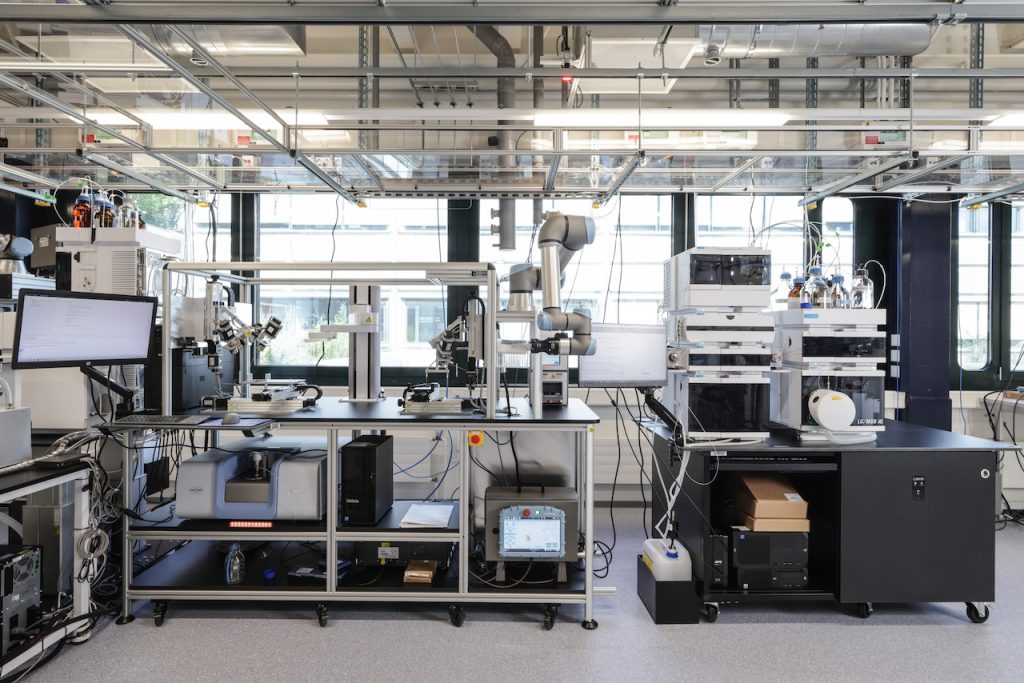
We designed and are currently building an integrally automated platform that will manage the process from unknown peak detection by LC-MS in crude reaction to its full molecular characterization. In order to perform this sequence, it will be required to integrate at the sample and data level:
- LC-DAD-MS
- Chiral SFC-MS
- Preparative LC
- Liquid handler/SPE
- Fourier-transform Infrared spectroscopy
- Ultraviolet-visible spectroscopy
- High resolution Ion Mobility
- High resolution mass with Q-TOF spectrometry
- High-resolution Nuclear Magnetic Resonance
The complete sequence of analysis is performed on the same aliquot and the samples are prepared for NMR analysis without any human intervention.
Some elements of the chaining are already patented at EPFL level : 0538B1001EP – K. Villat, P.Miéville EPFL – Direct 3D printed seal for chemical containers 3D-CHEMSEAL
In collaboration with : Advanced Micro Fluidics , Bruker Switzerland
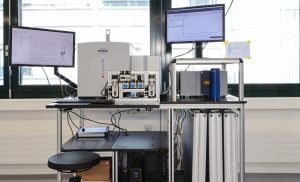 |
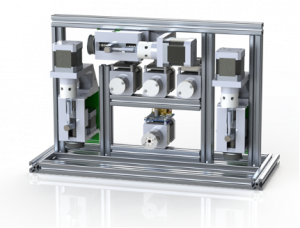 |
In order to optimize catalytic reactions, it is required to follow the evolution of various chemical species in real time. Some analytical tools, such as infrared or benchtop NMR can be used for this purpose. However, in order to collect data in the most standardized way as possible, we plan to automatize the simultaneous in-line analysis of our three chemical reactors. For this purpose, the benchtop NMR requires to be multiplexed with the three reactors and to perform online solvent exchange in order to be able to perform parallel measurements. A microfluidic system is being developed in order to extract the reaction media and prepare it for NMR analysis.
In collaboration with Bruker Switzerland.
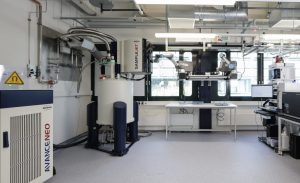 |
||
In order to make the NMR spectral characterization integrated in the global analytical workflow, we are developing an entirely automated high-resolution 400 MHz NMR setup using a Bruker SampleJetTMAutosampler for highsample throughput directly interfaced with a Universal Robot UR5e.